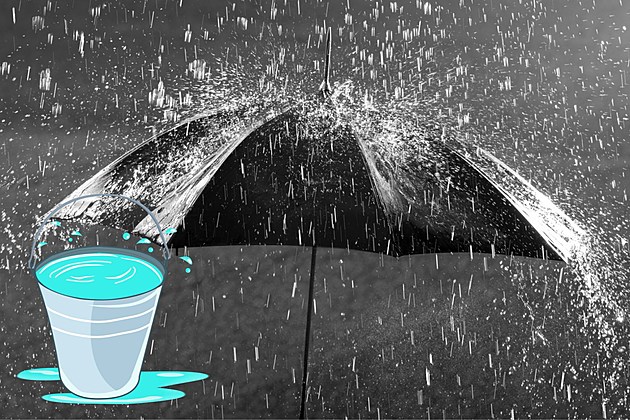
Is It Still Illegal to Collect Rainwater in WA?
I know what you're thinking. "Hold Up! Wait a minute! You're saying it is illegal to collect rainwater? Water? That's falling from the sky. That water. That free water that comes from clouds that falls everywhere and we can't collect it?"
Correct! It is illegal to collect rainwater in Washington State.
Or, at least it was. There are a few exceptions.
Is it legal or not?
The quick answer is it's not illegal so long as you're using it for the right purpose. Different counties also have their own rules on what's going on with rainwater collection.
Washington's Department of Ecology says you don't need a permit to collect rainwater if your structure isn't specifically for collecting rainwater, if that makes sense. If you happen to have a rain gutter on your house that just spills out of the drain and you have a rain barrel to collect it for future use, in most parts of Washington, that's perfectly fine.
If you're collecting it for drinking purposes, which is super unsanitary if you plan on drinking it without treating it, you'll have to look into your local county to see what's up with that.
According to savethedropla.com collecting rainwater in Washington was illegal until 2009. With how much the west side of Washington rains, you'd think it would be encouraged to collect rainwater for future use.
Benefits in collecting rainwater
A few reasons for collecting rainwater would be for something like watering your plants with natural water. All the minerals found in rain makes it great for gardens.
You could also consider using it for cleaning things as rainwater is a natural soft water since it hasn't, yet, had contact with earth's minerals.
And, naturally, a reduced water bill doesn't suck. There are people who would use rainwater for larger projects like washing their car or even flushing their toilet.
So, yes, check with your local county but collecting rainwater in Washington should be fine.
LOOK: The most expensive weather and climate disasters in recent decades
TIPS: Here's how you can prepare for power outages
KEEP READING: Get answers to 51 of the most frequently asked weather questions...
KEEP READING: What to do after a tornado strikes
LOOK: The most extreme temperatures in the history of every state
More From 97.1 KXRX









